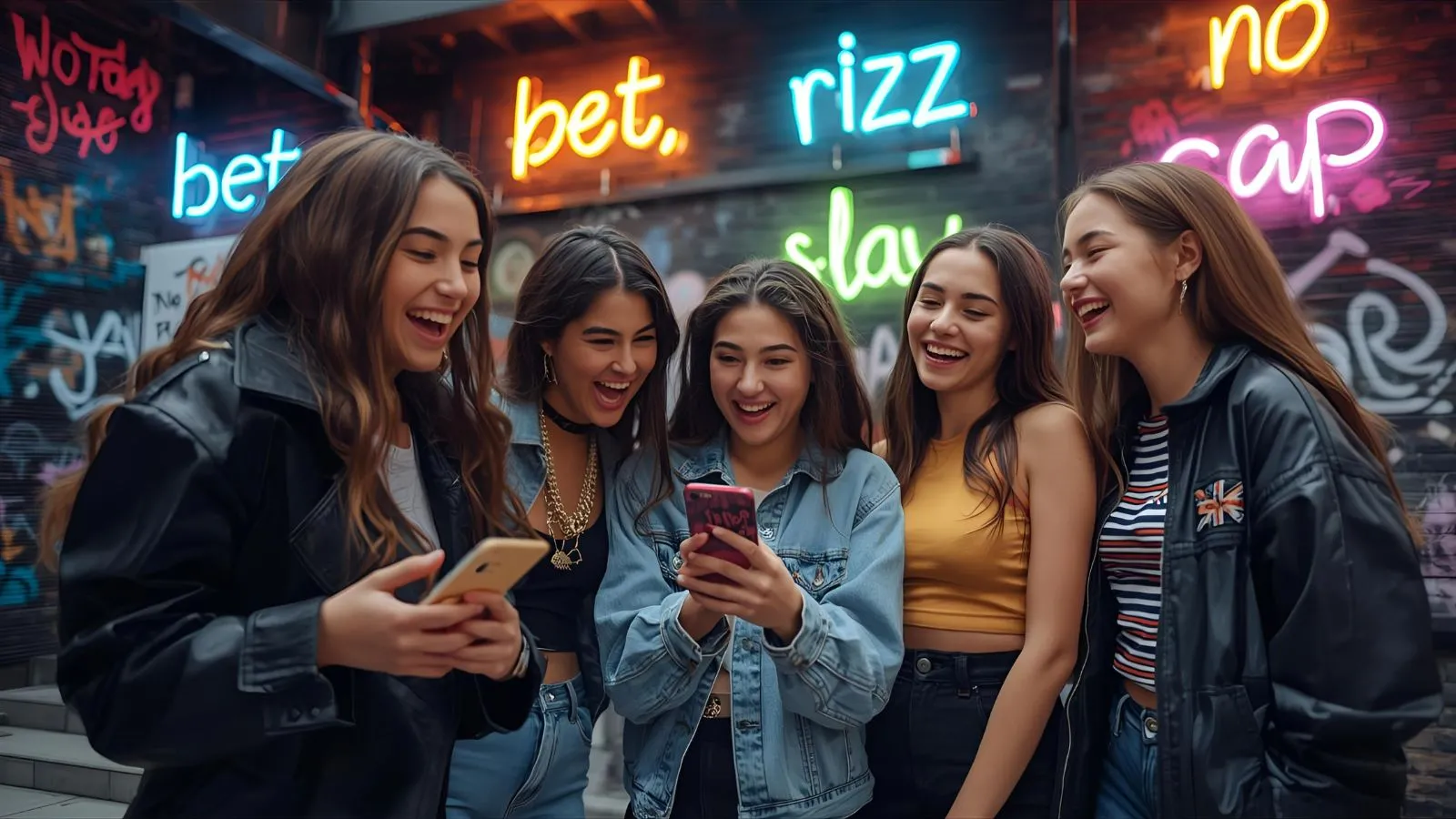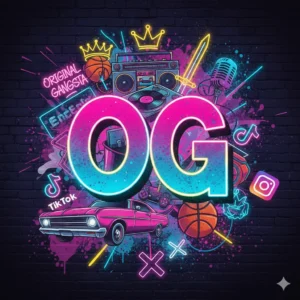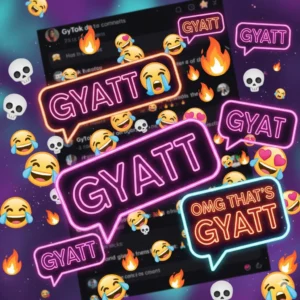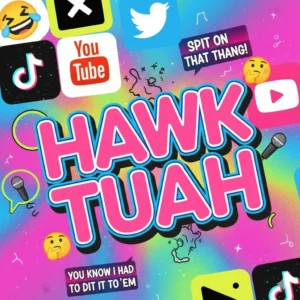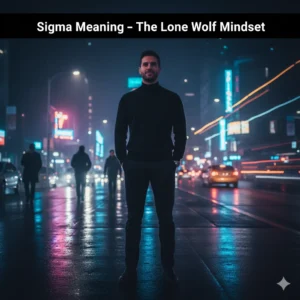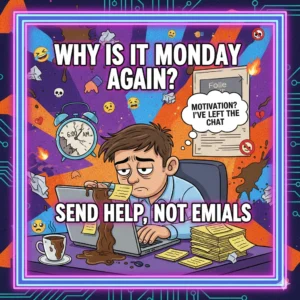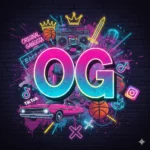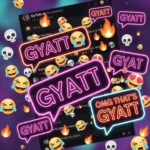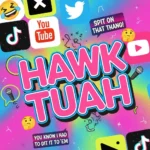Language evolves at an astonishing pace, but no demographic has influenced digital communication as dramatically as Generation Z.
Born between the late 1990s and early 2010s, this generation is not only fluent in English but also in internet dialects—a fusion of slang, abbreviations, memes, and symbolic expressions.
In 2024, Gen Z slang continued to shift rapidly. Some terms gained global traction, while others remained niche, circulating primarily within TikTok threads, Discord servers, or private group chats.
The year 2025 has already brought forward new insights into how this slang functions—not just as casual lingo, but as a cultural marker of identity, humor, and belonging.
In this article, we’ll break down:
- The meanings behind key slang terms such as “stand for” and other Gen Z phrases.
- The evolution of abbreviations in text conversations.
- Alternatives you can use in professional, casual, or friendly settings.
- Ten practical examples of how to adapt these terms to context.
- A forward-looking analysis of language trends in 2025 that you won’t find elsewhere.
By the end, you’ll not only understand Gen Z slang but also know when, how, and why to use it depending on tone, audience, and situation.
What Does “Stand For” Mean in Gen Z Slang?
Traditionally, the phrase “stand for” refers to supporting a cause or representing an idea. For example:
- “I stand for equality.”
- “This policy stands for fairness.”
But in Gen Z slang, the meaning has broadened. In text conversations, “stand for” often conveys:
- Support for a person or concept (fan culture).
- “I stand for her music.” → meaning I support and admire her work.
- “I stand for her music.” → meaning I support and admire her work.
- Boundaries in relationships (what one tolerates).
- “I don’t stand for disrespect.” → meaning I won’t tolerate that.
- “I don’t stand for disrespect.” → meaning I won’t tolerate that.
- A shorthand in casual texting where it doubles as both literal and figurative expression.
Thus, the Gen Z usage remains tied to its original meaning but carries a sharper, identity-driven nuance. Saying you “stand for” something online doesn’t just imply support—it signals alignment with a community.
The Role of Abbreviations and Acronyms in 2024-2025
The speed of digital communication forces users to compress ideas. While older generations had acronyms like BRB (Be Right Back) or LOL (Laugh Out Loud), Gen Z adds a layer of irony, aesthetics, and cultural references.
Here are some fresh 2024–2025 slang acronyms:
- ICL → I Can’t Lie (used like “tbh”).
- OOMF → One of My Followers (popular on Twitter/X).
- BFFR → Be For Real (demanding honesty).
- FRFR → For Real, For Real (emphasis on sincerity).
- ATM → Still means At The Moment, but is also ironically used for money machine.
- DNM → Do Not Mind (often in group chats).
These abbreviations are not static; they mutate depending on online subcultures. For example, FRFR may sound redundant to Millennials, but to Gen Z, it adds emotional intensity.
Why Slang Matters More Than Ever in 2025
Slang is not just about sounding trendy—it’s about:
- Identity signaling: Using slang aligns you with your generation or subculture.
- Efficiency: Shortened forms save time in fast-paced online chats.
- Creativity: Gen Z treats language as flexible—mixing irony, humor, and drama.
- Boundaries of tone: The same phrase can sound playful in one setting, confrontational in another.
Polite, Professional, and Casual Alternatives
Sometimes slang doesn’t fit the situation. For example, if you’re drafting an email, “BFFR” may not be the best choice. Below, we explore how to translate Gen Z slang into context-appropriate expressions.
Example Phrase: “I Stand For You”
- Polite Alternative: “I truly support you.”
- Professional Alternative: “I fully endorse your approach.”
- Casual Alternative: “I’ve got your back.”
Ten Examples with Context (Polished for 2025)
Here are 10 high-quality examples showing how to use Gen Z slang and alternatives effectively:
- Slang: “BFFR, you can’t be serious.”
- Polite: “Please tell me you’re joking.”
- Professional: “I find that difficult to believe.”
- Casual: “No way, for real?”
- Polite: “Please tell me you’re joking.”
- Slang: “ICL, that was bold of you.”
- Polite: “Honestly, that was quite daring.”
- Professional: “I must admit, that was a bold move.”
- Casual: “Can’t lie, that was gutsy.”
- Polite: “Honestly, that was quite daring.”
- Slang: “We stand for her—she’s iconic.”
- Polite: “We admire her greatly.”
- Professional: “We recognize her significant influence.”
- Casual: “She’s a legend, no doubt.”
- Polite: “We admire her greatly.”
- Slang: “That movie was mid.”
- Polite: “The film was average.”
- Professional: “The production quality was moderate.”
- Casual: “It was okay, nothing special.”
- Polite: “The film was average.”
- Slang: “No cap, that’s the truth.”
- Polite: “Honestly, that’s correct.”
- Professional: “Factually, that is accurate.”
- Casual: “For real, that’s legit.”
- Polite: “Honestly, that’s correct.”
- Slang: “This vibe is immaculate.”
- Polite: “The atmosphere is wonderful.”
- Professional: “The environment is exceptionally positive.”
- Casual: “This place feels amazing.”
- Polite: “The atmosphere is wonderful.”
- Slang: “I’m lowkey stressed.”
- Polite: “I’m somewhat anxious.”
- Professional: “I’m experiencing mild stress.”
- Casual: “Kinda stressed, not gonna lie.”
- Polite: “I’m somewhat anxious.”
- Slang: “That’s a W for you.”
- Polite: “That’s a personal success.”
- Professional: “That achievement is noteworthy.”
- Casual: “Big win for you, congrats!”
- Polite: “That’s a personal success.”
- Slang: “He’s giving main character energy.”
- Polite: “He carries himself with confidence.”
- Professional: “He demonstrates strong leadership presence.”
- Casual: “He’s the star of the show.”
- Polite: “He carries himself with confidence.”
- Slang: “We outside tonight.”
- Polite: “We’re going out this evening.”
- Professional: “We’ll be attending the event tonight.”
- Casual: “We’re hitting the town later.”
The Nuances of Tone
Tone matters more than words. For example:
- Saying “No cap” in a boardroom may seem unprofessional, but replacing it with “That’s completely accurate” maintains credibility.
- Using “mid” among friends sounds casual, but in a review, “average quality” conveys the same meaning respectfully.
Understanding which register to use—casual, polite, or professional—is the difference between effective communication and sounding out of place.
Predicting Slang Evolution in 2025
Based on linguistic patterns and digital culture shifts, here are unique predictions for 2025:
- AI-Influenced Slang → With AI chatbots integrated into everyday apps, phrases like “GPT me that” may emerge, meaning explain it clearly.
- Hybrid Emojis + Words → Emojis will increasingly replace acronyms. Example: 💀 (dead) continues to replace LOL.
- Sustainability Slang → Words like “green flex” (showing off eco-friendly habits) could rise.
- Shorter Intensity Markers → Repetition (e.g., frfr, ong ong) may shrink into single new forms.
- Cultural Globalization → Expect slang from non-English TikTok cultures (Korean, Spanish, Arabic) to merge into mainstream English slang.
These predictions give a competitive edge to anyone wanting to stay ahead in digital communication.
Conclusion
Gen Z slang is more than just playful words—it’s a social code. In 2024, phrases like “stand for,” “BFFR,” “ICL,” and “mid” dominated conversations.
Entering 2025, we can expect slang to become even more AI-driven, globally influenced, and emoji-integrated.
For professionals, knowing how to adapt slang into polite or professional alternatives ensures you remain relatable without losing credibility.
For casual speakers, understanding slang keeps conversations engaging and culturally relevant.
By mastering the nuances, you don’t just keep up with Gen Z—you communicate fluently in the language of the future.
